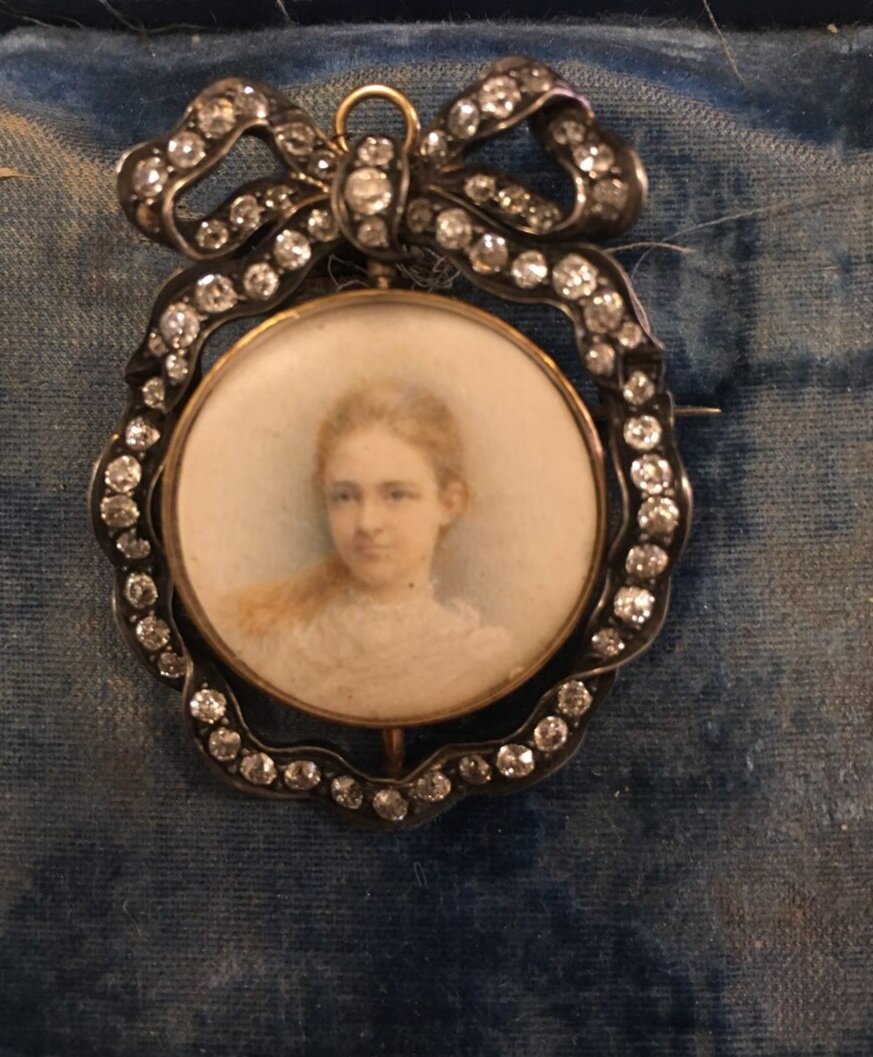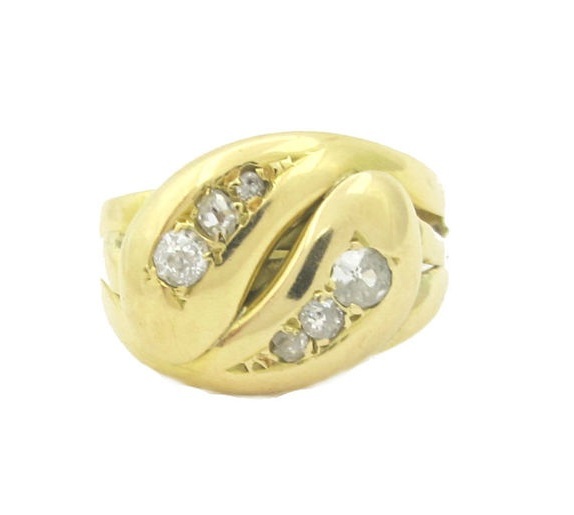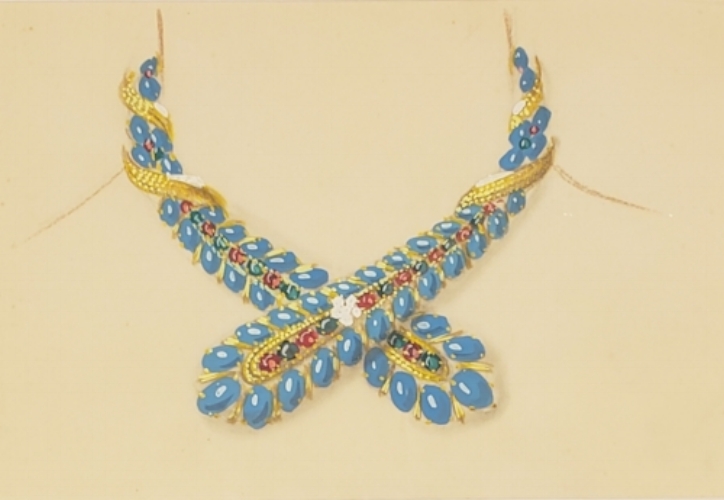With Mother’s day approaching, it seemed a good time to feature this lovely jewel, exquisitely made and clearly a special piece for the woman who originally wore it.
Sometimes jewels come to our shop with their whole backstory. Sometimes all we have is the object itself. Such is the case with this antique brooch/pendant: inside a diamond border, a swivel-locket holds miniature portraits of two young girls, perhaps sisters. A lack of artist’s signature or engraved dedication keeps their identities a mystery, but that doesn’t mean they can’t tell us about the time and place they came from.
At first glance this brooch, with its ribbon frame of old mine cut diamonds set in silver, is similar to portrait jewels such as those favored by aristocrats of the seventeenth and eighteenth centuries.
Miguel Jacinto Meléndez, Elisabeth Farnese c. 1718-1722 wearing a diamond-framed miniature, suspended from ribbon. In the Museo Nacional del Prado, Madrid.
BUT the hairdos and outfits of the sitters in our brooch clearly place them in the early twentieth century. Our friend, fashion historian Bethany Gingrich, dated them c. 1900 – 1910 to be specific (thanks Bethany!)
c. 1900-1910 brooch, shown next to an authentic c. 1700s ring. On both jewels the diamond faceting and settings techniques are similar, but the outfits and hairstyles of the sitters differ significantly. To properly date portrait jewels, it’s important to put on your fashion history hat (pun intended). Gray & Davis collection.
Conclusion: this jewel must have been made during the portrait miniature revival! Beginning c.1890 and centered in New York City, a group of artists revisited the antiquated miniature tradition, creating tiny portrait keepsakes for wealthy clientele.
Our brooch goes a step further, reviving an eighteenth-century form for the jeweled setting as well as the portraits. Louis XIV, XV and XVI-inspired style was all the rage among the Gilded Age elite, so this piece would have been quite up-to-the-minute when it was made, in spite of its historicizing design.
Guests at James Hazen Hyde’s 1905 Versaille-themed costume ball.
And if you’ll allow us a flight of fancy: it might be pointed out that the very first Mother’s Day in the United States was celebrated in 1907, so maybe we can imagine our little brooch started its life as a gift for one of the very first Mother’s Days.




























